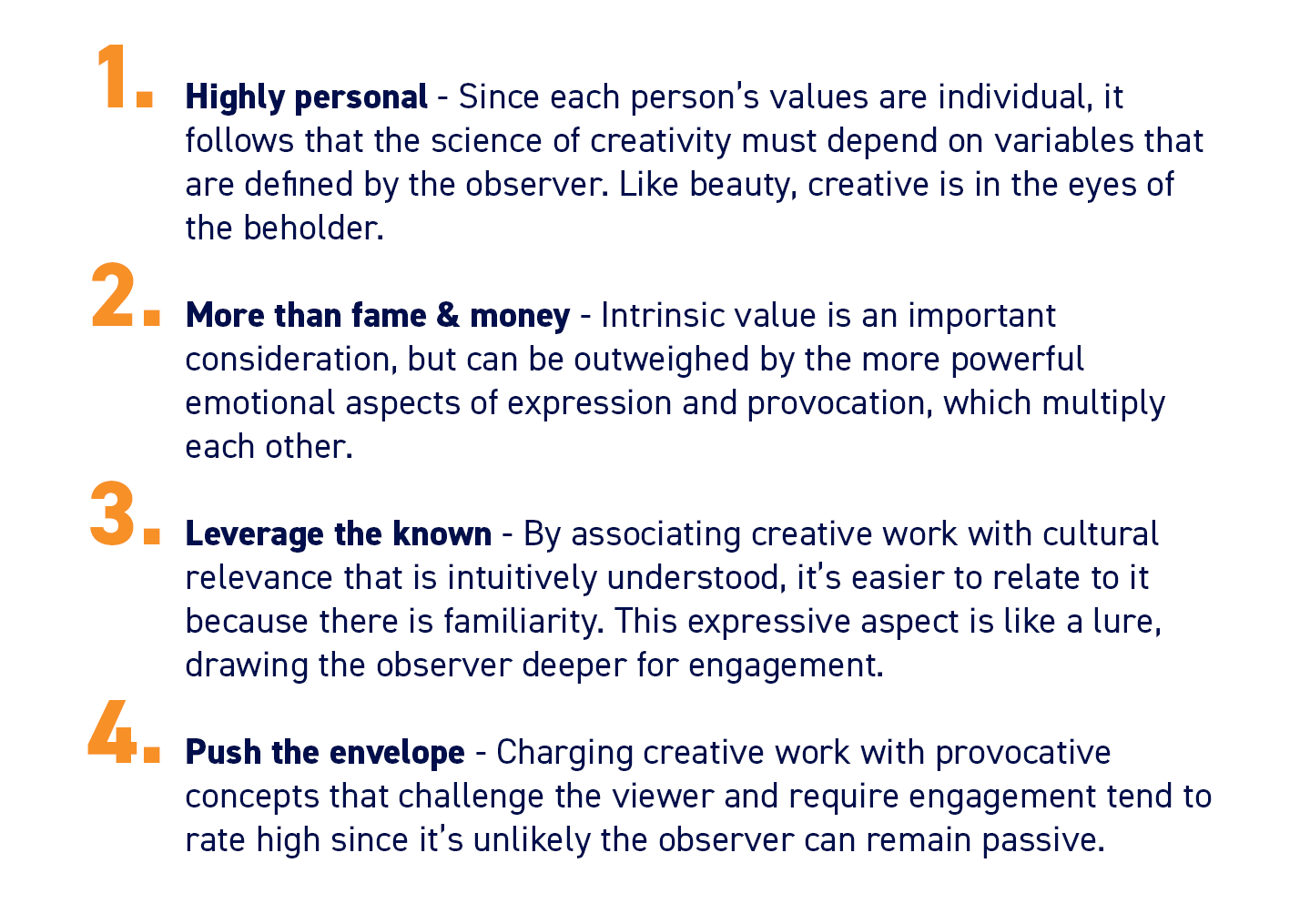
I’ve worked in dozens of creative industries for several decades. It’s involved presenting a lot of creative work, followed by discussions with clients and stakeholders to get their feedback. They quickly form their opinions, react, then deliver a judgement. Love. Hate. Joy. Bewilderment. Maybe it’s more than just a matter of taste.
> Is there science behind it?
Traditionally, financial results have been used as a makeshift way of keeping score. But in the creative world, some of the best artists, designers and creative minds have struggled to find financial rewards and failed miserably during their lifetimes, only to be discovered posthumously. So if financial success isn’t a fair measure of what’s creatively valuable, and subjective taste is unreliable, what can we count on to help us determine the basis for “great creative?”

At Flux, we’ve developed a framework that can be examined, analyzed and defined. It explains why we react positively or negatively to creative content, and is extremely valuable for brand strategy. Applying this framework informs the creative process, helping us craft messaging, artwork, programs and experiences that predictably resonate with an audience. Although artistic exploration isn’t scientific, the reactions to creative deliverables for branding can be predicted using this science. If our observations are accurate, it’s a powerful tool that you should be familiar with.

This hypothesis has increasingly provided a methodology for us to analyze and improve the creative we produce in our studio. By approaching our work from a scientific standpoint, we’re able to strategically develop creative work that’s infused with intelligence and designed to generate positive reactions

> Critical success factors:

We utilize this formula in our work, and continue to conduct informal trials as we refine it. Great creative work comes from big ideas, big thinking and big risks. Playing it safe reduces volatility, but it limits upside. That risk/reward analysis is all too familiar, but continues to remain a factor in everything we do.
In applying the fundamentals of this science, it’s essential to know your audience. Having a clear picture of your customer’s persona makes it possible to appeal to their financial, cultural and conceptual preferences. Our framework requires psychographic understanding to be effective. Predicting opinions using our hypothesis is best when it’s targeted to a specific audience.
There’s much more to discuss about these three evaluations, which will be featured in future essays. Feel free to consider the framework and drop me a note with your thoughts. It’s a topic that ignites my passion, and I’m always happy to receive constructive feedback.